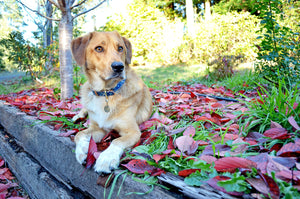Windbreak Your Home: Guide to Weather Protection
Protect your home from the elements! There are many environmental factors that ruin happy living situations, and nothing's worse than getting a cold winter wind blowing through your house and increasing your heating costs. Today, we are starting the conversation about windbreaks, natural and artificial. Good home design means thinking about wind protection for your home. Find out more information on energy-efficient homes and fighting climate change!
Natural Windbreaks
Natural or landscape wind barriers often include a number of carefully placed trees and/or shrubs near a home. The strategic placement is used to reduce a home’s high wind impact by redirecting the strong wind flow. Wind-blocking trees cuts down the effect of wind chill, ultimately lessening the need to heat your home. with the right trees, you can save money on energy bills! The most common plants used are dense evergreen trees and shrubs. Conifer trees are popular because once fully grown, they are high enough to block wind and send it over your house rather than a direct impact.
Shrubs are some of the best bushes for windbreaks because of their small stature; they seal your home against potential airflow in small spaces at the ground level. For most of these plant types, 2-3 rows should suffice for an effective windbreak. Additionally, the placement is severely important. You will want to place your windbreak rows 2-5 times the full-grown height of the trees away from your house. The distance puts your house in a microclimate pocket where airflow will circulate over and around.
Tips:
- Plant at least two different species of plants to ensure survival in the event of pest infestation
- Plant your small shrubs at least 12 inches away from the exterior of your home for pest control purposes
Your region’s climate is also a great determinant of windbreak planning. The Department of Energy has great information on how to naturally landscape to create a better, energy efficient home. You can also check out other landscaping ideas.
For example, the United States has 4 major climate regions to keep in mind: Temperate, Hot-Arid, Hot-Humid, and Cool. Each climate has different wind patterns and seasonal variations, so it is important to keep in mind, not all landscaping recommendations are universal.
The weather determines how and where to position windbreaks, how to weatherproof windows, and how to increase energy efficiency, as well as the direction plants and shades should face.
Man-Made Windbreaks
Unnatural windbreaks are also another option to use! This can include getting fence screens, trellis, sun shade sails, pergola, or artificial hedges. These options are made to have the same result as landscape windbreaks. Additionally, they can serve as great aesthetic pieces to the outdoor living space of your home. Available to you are wind screens like the ones we see at tennis courts. Windscreens lower wind speed and are made in a variety of ways. Some can roll up and down to protect the inside of your home from the sun’s rays like a privacy screen. This allows you to enjoy the weather and keep your home’s temperature from rising to uncomfortable heights.
Another version of unnatural windbreaks are artificial hedges. These can be placed closer to your home than the previous recommendations since they do not attract pests in similar fashion. Moveable windscreens are available for purchase and should be a top consideration if you do not have a lot of yard space. These are great because you can change the placement at any time.
Weatherproofing Dog Doors
Weatherproofing houses and weatherproofing windows are all well and good, but one of the most vulnerable places in your home is your pet door! Prevailing wind can find its way through the smallest crack in the flap, or seep through a poorly installed door. A lot of the insulating capabilities of pet doors come down to the design. Our best recommendations for energy-efficient and insulating doors: Endura Flap and Hale.
When it comes to having an energy-efficient home, you want doors, windows, and natural barriers that can keep your home warm during winter's most severe storms.
Windbreak source information (HGTV and the Department of Energy)





